Mold is not only a nuisance, but it can be dangerous if consumed. Most states in which cannabis is legal require microbial cannabis testing to detect the presence of contaminants such as E. coli, Salmonella, and varieties of mold and bacteria. While these standards vary between jurisdictions, even growers who face minimal testing regulations know that mold is bad for business.
Especially in highly competitive markets such as in Oregon or Colorado, reputation and branding can often become the defining line between successful grows and those who shut their doors. Nothing will turn a customer off more than paying for rotten bud. And while there are steps your staff can take towards quality assurance to prevent that from happening, a mold problem can quickly cost you an entire harvest. That is why prevention is the best medicine.
How to Identify Moldy Cannabis
One way you can help minimize an infestation’s ability to spread throughout your grow room is to diligently inspect your plants for signs of disease. However, it may already be too late to save a plant by the time you are able to identify any problems. This is another reason why prevention is the best stance to take on your grow room mold mitigation strategy.
How to Identify Bud Rot
Botrytis, often referred to as “bud rot,” is a type of fungus that inhibits water and nutrient delivery. Because the infection develops inside the plant first before spreading, it’s difficult to catch early on.
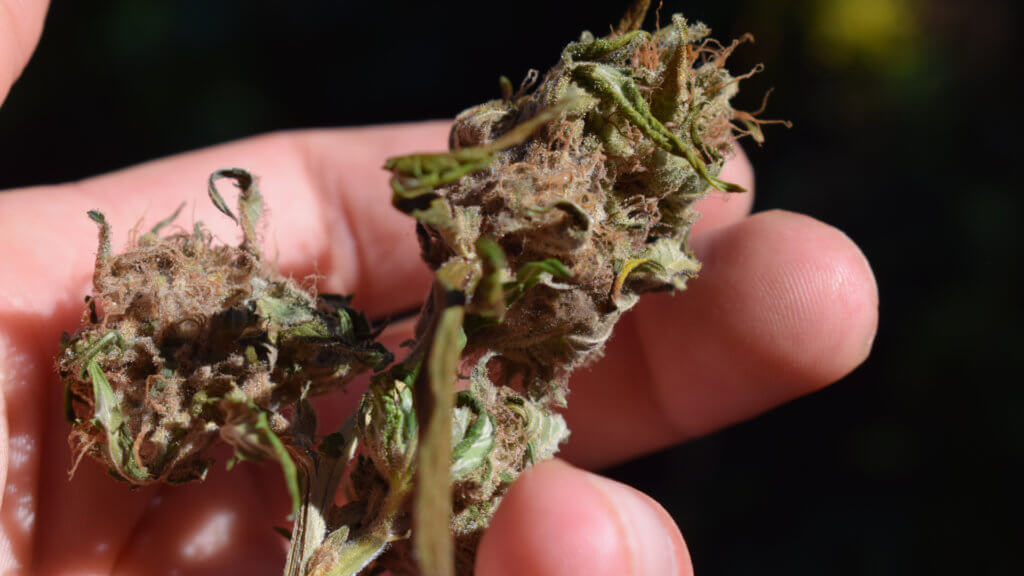
You might suspect a plant of falling prey to bud rot if the leaves become dry and wilted, the stem becomes mushy, and the bud takes on a dusty grey-brown appearance. Pull apart the cola to search for fuzzy grey mold.
How to Identify Powdery Mildew
Powdery mildew, often shortened to “PM,” is another kind of fungus that can be harmful to your plants. PM is a unique fungus in that it does not require external moisture, meaning that while it thrives in high-humidity climates, it can survive dry conditions as well. In fact, excessively dry conditions can damage your plants’ natural defenses against PM, leading to an outbreak just as severe as with excessively humid conditions.
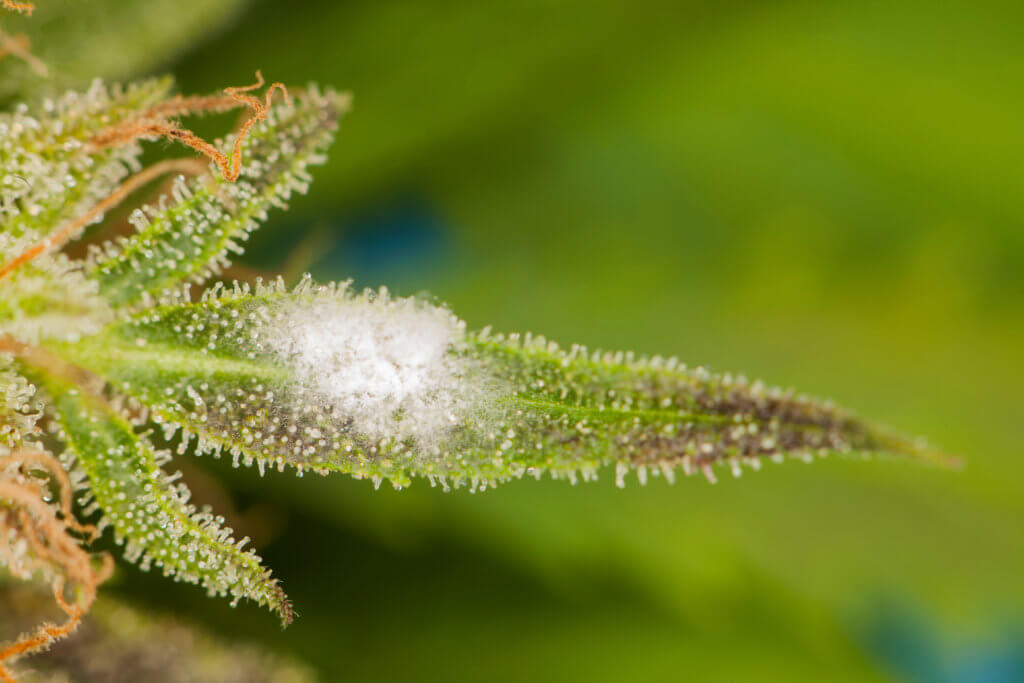
PM is identifiable by the whitish-grey dusty or sometimes web-like growth found on cannabis leaves. It can also cause the leaves to turn yellow and die.
What to Do if You Find Mold in Your Grow Room
If you diagnose an infected plant, immediately remove it and quarantine the plants located near it. Because mold is typically caused by an issue with the environment, you should inspect other plants around the room for similar signs of disease and take steps to assess the source of the problem. Let’s discuss some of the most common causes.
What Causes Mold in Grow Rooms?
PM spores exist all around us. They are most likely brought into the facility via infected clones, on employees clothing, or from unfiltered air that is brought into the facility. It’s when the environment is unstable, or your plants become stressed that mold spores are able to germinate and grow on the plants.
Temperature and Humidity Spikes
Mold likes high temperatures (about 70 degrees F and higher), high humidity, darkness and stagnant air. Unfortunately, this closely approximates the environment that is created during night cycles for many indoor cannabis gardens.
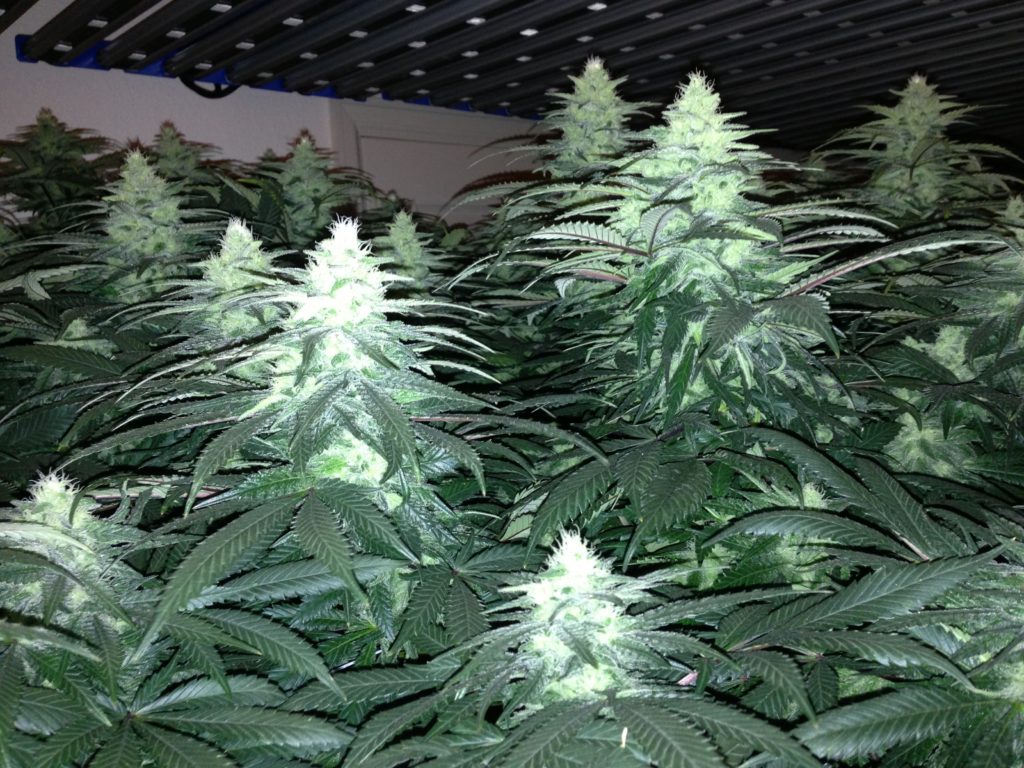
During the day while the lights are on, cooling is constantly being provided, keeping the air moving and the humidity levels under control. However, when the lights are off, so is the cooling system (most of the time) and thus, your humidity control. This results in humidity spikes and stagnant air, making nighttime cycles the most susceptible time for mold growth.
Insufficient airflow can also exacerbate an environmental issue, allowing for pockets of humidity and varying temperatures to form within the canopy. This becomes more of a challenge if you are growing in multiple tiers, making it harder for air to be evenly distributed throughout the grow space.
Contamination
Spores are everywhere, but there are a few common ways they can be introduced to your grow rooms. Clones brought in from external sources can be contaminated and quickly introduce an infection to your grow. Spores can also hitch a ride on your staff’s clothing or in their hair. Contamination from bringing in unfiltered outside air is also a major threat if you haven’t incorporated the proper precautions into your ventilation and mechanical system design. In some cases, PM could be systemic (meaning the plant carries the spores with it), but only become problematic when the plant is weakened.
How to Prevent Mold Growth
The best approach to mitigating mold in cannabis is to prevent it from taking root in the first place. There are measures you can take to minimize your risk of an outbreak including proper humidity and temperature control, creating evenly distributed airflow, routinely maintaining your HVAC equipment, incorporating filtration or sanitization systems, practicing proper hygiene, and implementing quarantine procedures.
Humidity and Temperature Control
Mold especially loves damp environments, so keeping the humidity levels inside your garden at a constant level will go a long way towards preventing an outbreak within the canopy. Without supplemental dehumidifiers, dehumidification only takes place while the room is being cooled. This is because dehumidification is a by-product of air conditioning. If your garden isn’t being cooled when the lights are off, the humidity levels will spike to dangerous levels. An often-overlooked factor, night-time dehumidification is crucial to preventing mold growth.
Make sure your HVAC system is designed to provide 24-hour dehumidification. For instance, standalone dehumidifiers can offer supplemental dehumidification if 24 hour dehumidification control is not already integrated into the cooling system. Every facility is unique, so work with an experienced designer or provider who knows how to account for plant transpiration and the unique conditions of indoor agriculture.
Airflow and Ventilation
A key part of maintaining a proper environment is providing adequate airflow. Stagnant air allows pockets to form of hot, humid air, and a lack of airflow will create more opportunities for inconsistent temperatures and humidity.
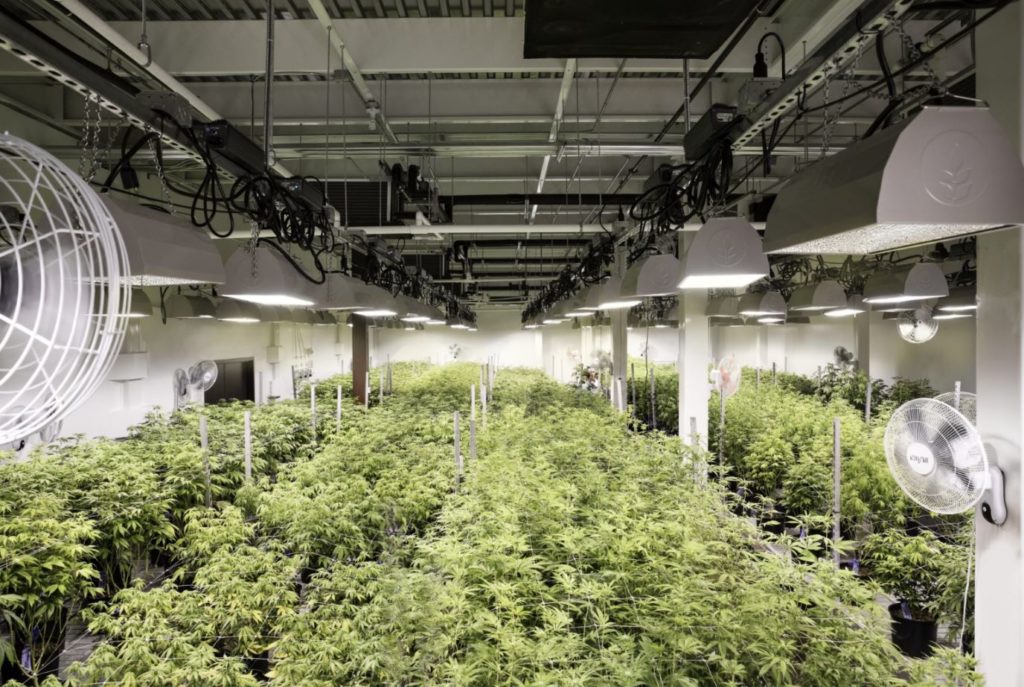
To avoid this, provide sufficient means for air distribution via ceiling fan coils, vertical destratification fans, and wall-mounted fans. Purchase an HVAC system that is properly sized to support your operation that can provide the BTUs necessary and create a homogenous environment.
Work with a mechanical engineer who has worked on projects in controlled environment agriculture before. Grow rooms present numerous challenges that are distinct from other commercial applications, namely that of humidity control.
Filtration and Sanitization
Depending on your quality standards, you may opt to take your mold prevention strategy a step further. While they are not necessarily required to prevent a mold outbreak from happening in your grow rooms, there are filtration and air sanitization options you can be incorporated into your HVAC system to greatly improve your air quality.
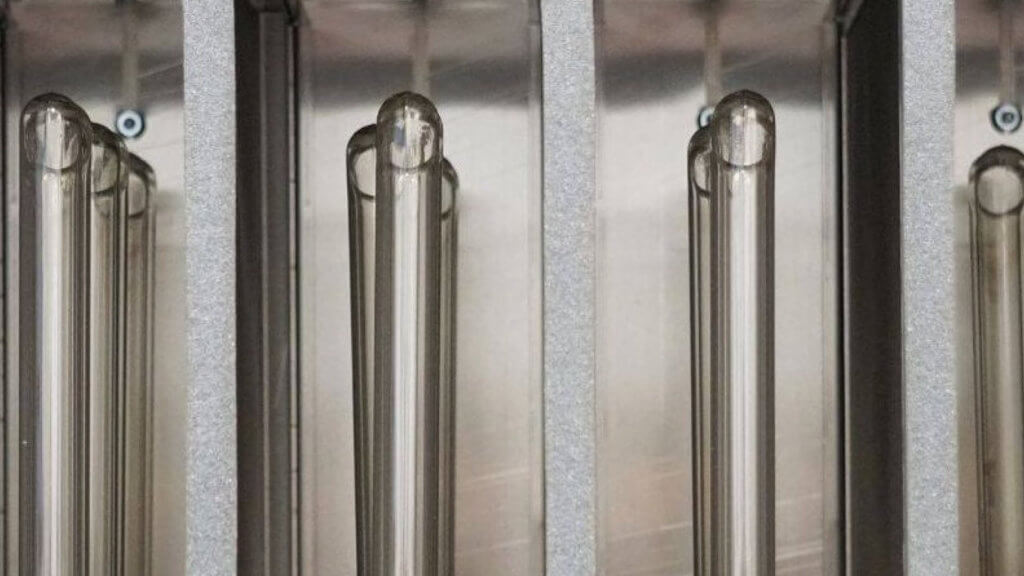
HEPA filters can be inserted into your HVAC equipment to capture contaminants that other filters may not be able to trap. Or you can take advantage of UVC technology to kill fungal spores, bacteria, viruses, and other pathogens by passing the air over a special UV light. Keep in mind that most of these lights do not provide enough dwell time to be effective at destroying a moving mold spore, but some air sanitization solutions do.
Hygiene
Practicing proper hygiene can also go a long way in preventing mold problems. It’s a good idea to quarantine clones before introducing them to your other plants. Be sure to regularly replace your HVAC filters and clean fan coils per your provider’s recommendations. Also, thoroughly clean the room between harvests. If necessary, you can require staff to wear hair nets and personal protective equipment (PPE) when entering the grow rooms.
Mold Prevention Best Practices
Best practices such as a consistent humidity level and temperature, proper air flow, and adequate hygiene practices can greatly help reduce the risk of a mold outbreak in your grow rooms.
If you need help designing a consistent grow room environment, contact us today. Our team of engineers are prepared to provide a system that is designed with your plants’ best interests in mind.

